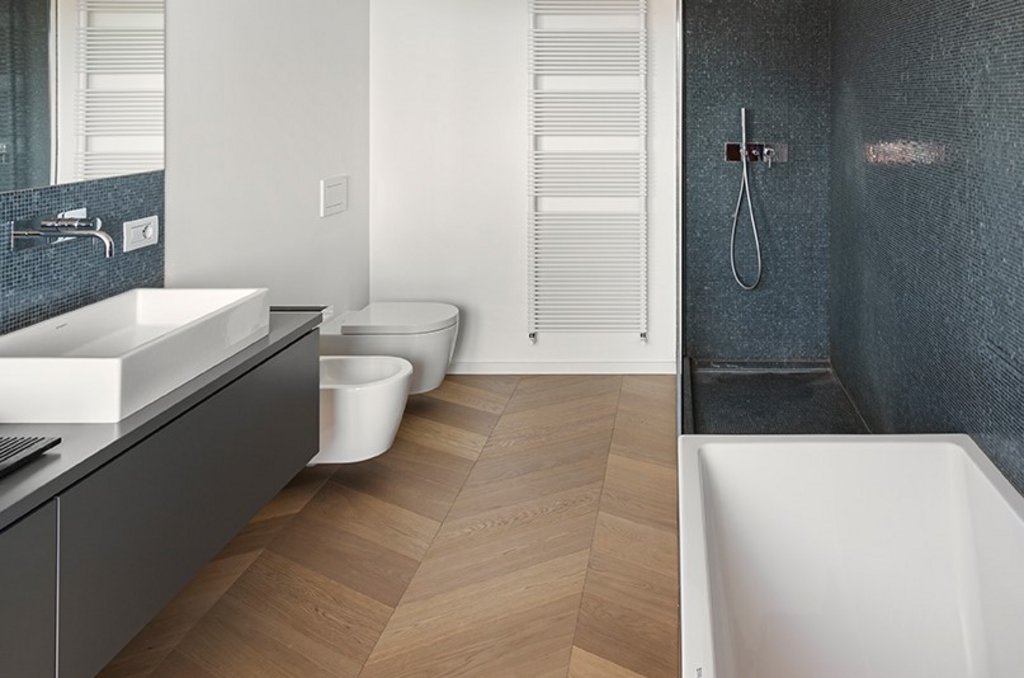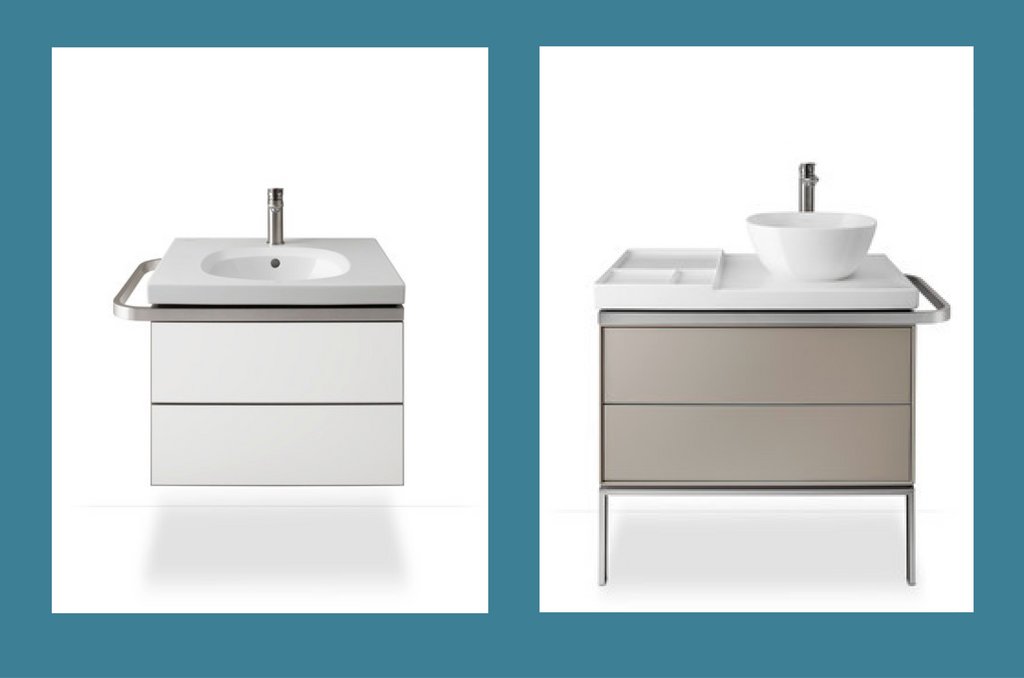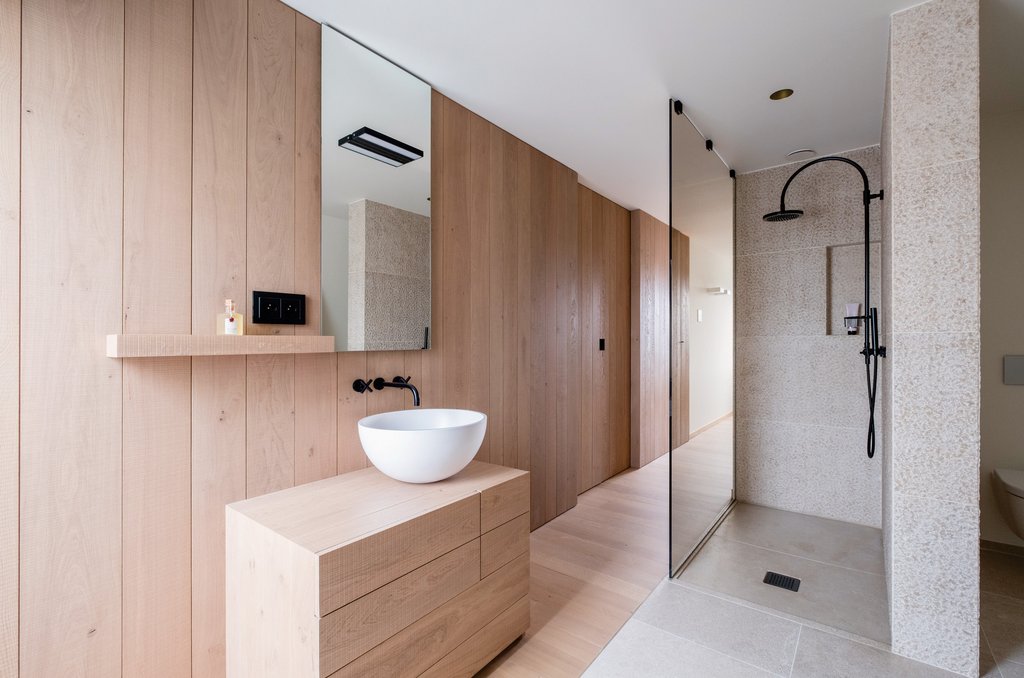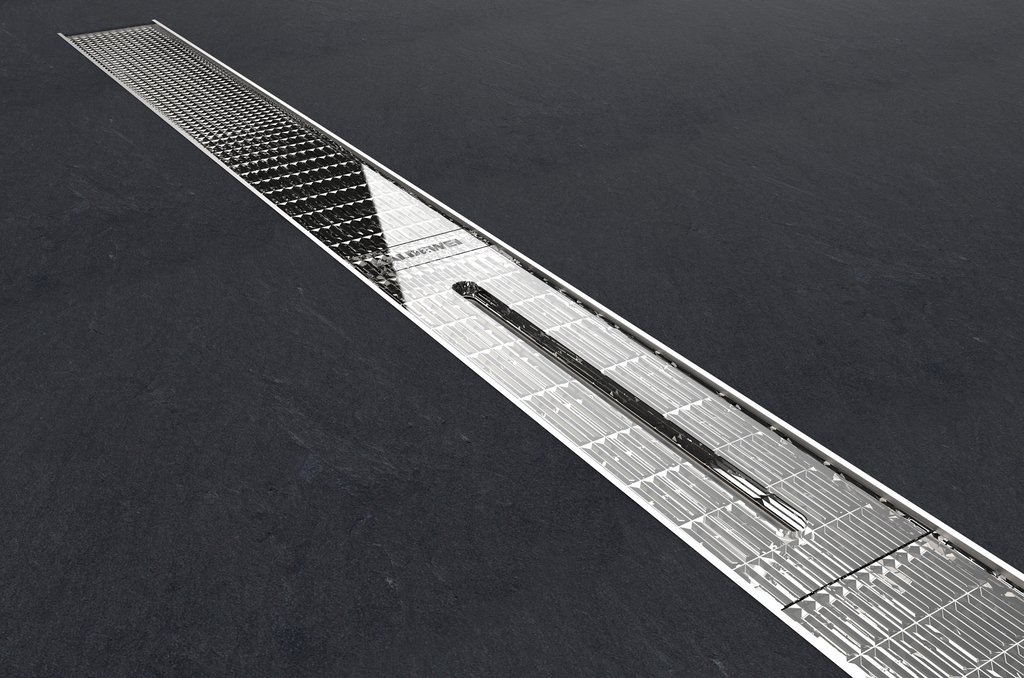Living Bathroom: 8 useful facts for planning a cosy bathroom
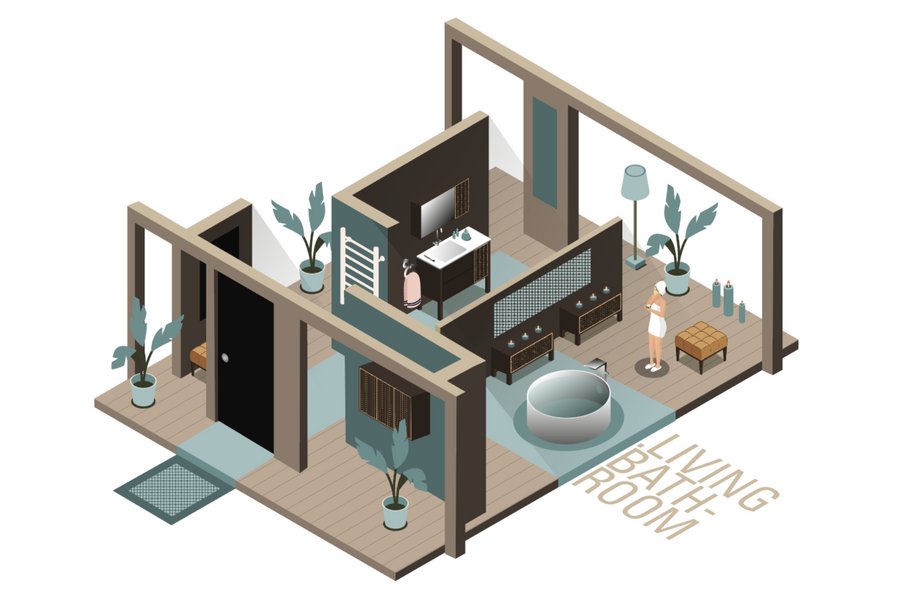
Illustration: Vereinigung Deutsche Sanitärwirtschaft e.V. (VDS)
Which factors does on-trend bathroom planning have to take into account
nowadays? Or to put it a better way: what kind of bathroom do people want? A
Living Bathroom! But what exactly turns a bathroom into a Living Bathroom?
The answer can be found in the various expressions used to describe it,
because – from “private spa” and “home spa” to “cosy bathroom” and “lifestyle
bathroom” – they all emphasise the comfort, convenience and relaxation provided
by this type of bathroom. The common denominator is the desire for an
attractively designed space that’s a pleasure to spend time in. Accordingly,
customers don’t just have high expectations of the design, they expect modern functionality
as well. Special features add the finishing touches of the Living Bathroom.
1. How “living-space-like” should it be?
In the German-speaking world, bathroom planners are often the first
creative service providers consumers have ever entrusted with the professional
design of a bathroom in their home. Besides questions of design and individual
preferences, planners also needs to ask the bathroom’s users about their
intimate habits and needs if they are to optimise daily routines and functions
accordingly – by no means an easy task. The second challenge: should the design
be based on the existing interior design that dominates the rest of the house,
or should the new bathroom serve as a reference point, as a basis for an
aesthetic update of the entire home? In the planning stage, extensive
visualisations (preferably hand-drawn) can help to describe the Living Bathroom
and provide a basis for decision-making.
2. Developing a storage space strategy
A cosy bathroom should look neat and tidy. The kind of cosy chaos that
might convey a feel-good atmosphere elsewhere can quickly reduce the bathroom’s
appeal. In this case, hygiene is the prerequisite for being able to “let
yourself go” without a care in the world. At the same time, no matter how high
its aesthetic ambitions, a bathroom should always remain realistic: in everyday
life, a family of four needs lots of towels and accessories, as well as all
sorts of care products. And all of that needs a designated place.
An analysis of the old bathroom brings clarity: which products are used
regularly, how does the bathroom perform on a daily basis? Which towels, fascia
rolls and slippers can disappear into a cabinet? And which tubes and medicines
should be out of children’s reach? Is there room for a laundry hamper? Or
perhaps for a spacious mirror cabinet that disappears into the recess created
by the prewall elements, a smart display cabinet with lots of space for
displaying decorative items, wide drawers with a functional organiser system or
even an innovative compartment under the bathtub? The bathroom planner has to
work with their client to come up with a custom-made storage infrastructure and
provide sufficient space to implement it. That ensures the bathroom will look
less cluttered, and there will be plenty of space for stylish decorative
touches.
3. Design-oriented bathroom products promise the biggest feel-good factor
In Germany’s bathroom sector, there are few companies that don’t rely on
professional support from (often prominent) designers when it comes to creating
products for “in front of the wall”. The decision to purchase a design-oriented
product doesn’t just ensure good-quality design, it’s also a decision in favour
of long-lasting, sustainable use. That’ particularly important when it comes to
bathrooms, because renovation cycles tend to be long. Bathroom furniture,
fittings, bathtubs and ceramic products with a high-quality design are the
starting point for meaningful bathroom planning. Making an individual selection
from among the almost endless choice of bathroom products and collections is
the key aspect of a bathroom planner’s role as curator.
4. The bathroom planner is becoming an interior designer
Besides
selecting the bathroom products and arranging them within usage zones, creating
a tasteful style is probably the biggest challenge of all when it comes to
planning a new bathroom: which furniture fronts, which colours are a good fit
with the client and their idea of cosiness? Which snug accessories can be used
to enhance the bathroom? How can more demanding requirements regarding the
indoor climate be taken into account without sacrificing comfort? In order to
avoid the furniture and equipment being damaged by water and constantly
changing humidity levels, the bathroom planner needs to work with the indoor
climate, not against it.
Using
materials that imitate nature can also be a useful strategy. Wood-effect tiles,
innovative furniture finishes that are guaranteed to last or water-resistant photo wallpapers – when it comes to creating optical illusions in the bathroom, anything goes! Using
furniture and other items intended for outdoors makes sense too: a weatherproof
armchair, a moisture-resistant outdoor rug or a waterproof lamp are all
excellent options for the bathroom as well. The connecting thread running
through the interior design is the story it tells, the owners’ tastes or the
architecture.
5. Colours for the Living Bathroom
Since the
ISH 2019 and the Pop up my Bathroom motto “Coloured Bathroom”, colour has been a trending
topic in the world of bathrooms again. Colour is an important design element
for bathroom planning and a crucial tool when it comes to implementing the
Living Bathroom concept. It’s obvious that the kind of all-white bathrooms that
used to be the norm are definitely no longer associated with modern cosiness. Which
is why, in the Pop up my Bathroom Magazine for the ISH digital 2021, colour
expert Dr. Kalthegener appealed to all professional bathroom planners to take a
bolder approach to colour. When it comes to interior design, it can be used to
create entire worlds. Colour consulting expertise is a skill that can be
learned and easily integrated into the planner’s design work. As in other areas
too, it’s the details that make the difference: the professionalism of a colour
scheme is never more obvious than in the colour gradations – which often prove
more difficult than expected, even when using white.
6. Lighting as a balancing act between function and emotion
A bathroom
has to perform various functions over the course of the day, which is why the
lighting plays a particularly important role. It provides support for meeting the
various requirements a bathroom has to satisfy. During the planning phase,
different sources of light should be considered, and the interaction between
natural and artificial light needs to be factored in as well. Ideally, colour
and material samples should be checked out on site at different times of day. At
the same time, the cosiness of a Living Bathroom benefits most from emotional,
atmospheric lighting. Staging architectural elements with indirect light can
also produce an extremely cosy effect, and playing with different colour
temperatures and lighting scenarios has a major impact when it comes to
creating a space that’s a pleasure to spend time in.
7. The bathroom planner as storyteller
A great
many aspects and design elements need to be taken into account in order to come
up with a consistent and harmonious plan for a Living Bathroom. Defining a
suitable idea or story is extremely helpful for ensuring a holistic design
approach and makes many creative decisions easier. With a consistent story, the
planner takes the future users on a journey, in the course of which the overall
context serves as the basis for much of the decision-making. Whether the
customers opt for a sustainable bathroom or an on-trend industrial look, an
upbeat family bathroom or a design with masculine appeal, the story should
always reflect the needs and preferences of the users. The choice of colours
and materials, furnishings and lighting only needs to be factored into the
story in the second step of the planning process.
8. Allow for updates: make space for fashionable design elements
Sadly, even
for Living Bathroom fans, alterations to water-carrying bathroom products and
permanently installed furniture or tubs are difficult to implement. As a
result, it’s often the decorative elements that have to satisfy the desire for
an on-trend update. And by the way: accessorising is very in again right now. So
it’s a great help if there are plenty of surfaces for displaying such items. A
lifestyle update can totally change the look of the bathroom. A new coat of
paint, a new rug, pictures on the walls or a new set of towels are just a few
of the options for giving the design of a Living Bathroom a makeover from time
to time.
For
the ISH digital 2021, we have visualised a Green Bathroom and a Smart Bathroom in
a special installation. For
a 360-degree tour of the exhibition, click here.
On our YouTube channal you can find the Pop up my Bathroom video of the Living Bathroom.
